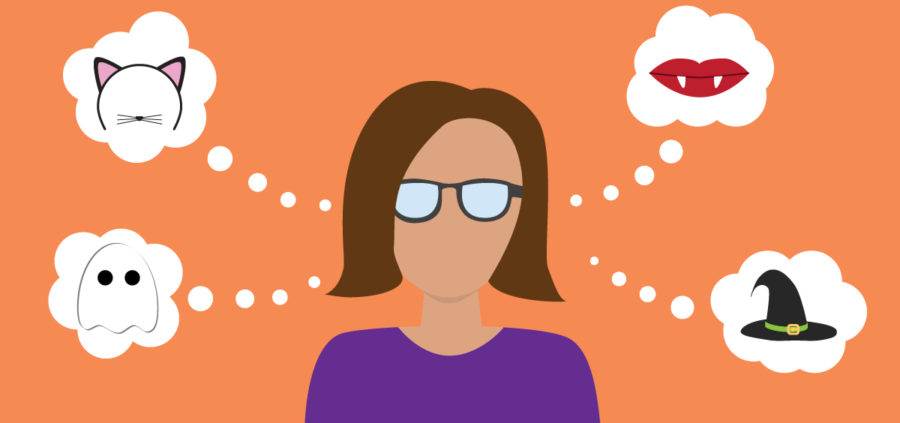Vice President for Diversity and Inclusion speaks on cultural appropriation
When Halloween comes around, people may unknowingly or knowingly choose costumes that cross the line of cultural appropriation, which consists of wearing something from another culture that is not their own.
October 28, 2019
Reginald Stewart, vice president for Diversity and Inclusion, said ideally people should practice “cultural appreciation” as opposed to appropriation, as the act of appreciation requires humility rather than hubris.
Halloween is a holiday known for costumes and dressing up. But often, people do not realize in what ways their costumes can be cultural appropriation.
The Oxford English Dictionary defines cultural appropriation as “the unacknowledged or inappropriate adoption of the customs, practices, ideas, etc. of one people or society by members of another and typically more dominant people or society.”
Stewart said cultural appropriation is “the stealing of a culture.”
“It is oftentimes a commodification of a culture,” Stewart said. “For example, my favorite team, the Golden State Warriors, used a headdress as the primary logo in the early through late ’60s when they were the San Francisco Warriors. Thankfully, they changed the logo in 1969. The idea of using someone else’s culture and likeness to sell your product is a legacy of the colonizer mentality where humans and their artifacts were goods to be bought, traded, exploited and sold.”
There are various ways people culturally appropriate through a Halloween costume. One is blackface, makeup worn by a non-black person to mock or degrade individuals of color. Another is wearing clothing, makeup, accessories, etc. of a non-dominant cultural identity. For instance, wearing your hair in traditionally black hairstyles like dreadlocks or box braids when you are not of any African decent or wearing a traditional Native American headdress when you are not of any Native American decent are examples of wearing something of a culture that does not belong to you as a “costume.”
Stewart said cultural appropriation such as blackface can cause harm to minoritized communities.
“Deciding to put on blackface is one issue, but the ability to wash it off needs more conversation,” Stewart said. “As parents and as a community, we spend countless hours helping our children navigate the stereotypes and hurtful messages assigned to skin pigmentation and other cultural markers like language and hair.”
There is harm in cultural appropriation in all its forms, but specifically in the fact that through it an individual is putting on a costume, and at the end of the day it gets taken off, Stewart said. They do not have to stick with the minoritization that comes with it, and they never face the struggles that come with being a part of that minoritized group or culture.
“The ‘washing off’ of blackface is a literal camouflage against 400 years of slavery, Jim Crow, Separate But Equal and the brutalization of black and brown bodies,” Stewart said. “You can pretend to be black without experiencing the detrimental effects of racial profiling, redlining, predatory lending, inferior public education systems or mass incarceration by simply washing the blackness away. Think about that for a minute.”
Racquel González, sophomore in criminal justice studies, shared some of the history of blackface, which is one of the most common forms of cultural appropriation.
“The beginning of blackface was within the 1800s, within slavery days,” González said. “Blackface was utilized to portray the black community as false depictions such as barbarians, reckless, unintelligent, hyper-sexual beings. The purpose of this portrayal was to be used as propaganda, to further inflict fear and loathing within white members. [It] never has — or will — serve the black community in a positive way.”
González said cultural appropriation depicts communities as something they are not and speaks for them when they are not the ones talking. She noted it is a costume for the performer, but for people who are a part of the communities being culturally appropriated, it is a reality.
“At the end of the day, the perpetrators can wash it off, and the black community cannot, González said, referring to blackface. “Their skin color is what has undeservingly picked them as candidates of slavery, and to this day, [un]justifiable incarceration rates and killings.”
With Halloween around the corner, González commented on ways cultural appropriation has been shown through peoples’ costumes.
“It can be seen abundantly through the Halloween time as white people are dressing as another race and in most cases, representing rappers or criminals,” González said. “Cultural appropriation is seen all over from cornrows to making your skin darker, to twerking, to using slang or altering your voice to sound like another person, to achieving bigger lips, to utilizing the term ‘spirit animal.’ It is seen in everyday life, not just Halloween, because more and more white people are observing other cultures and picking and choosing what they like and adopting it as their own.”
González noted that America today is seen as a mixing pot instead of a place that celebrates and appreciates people of the individual cultures within it. González said this is harmful because it keeps from “allowing them to own different aspects [of their cultures] for themselves.”







